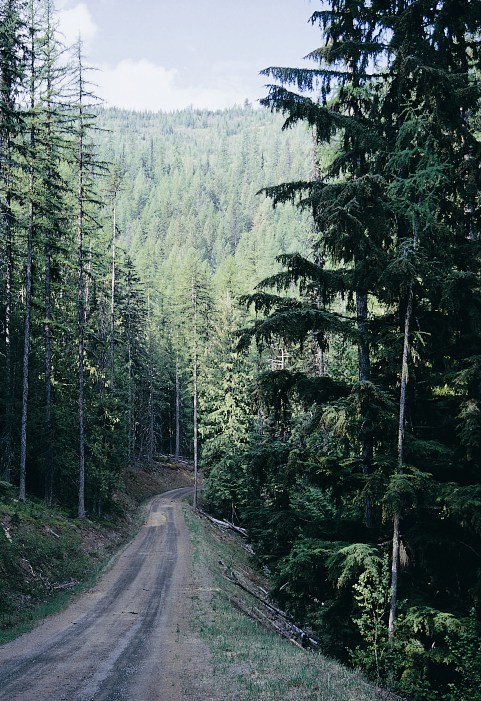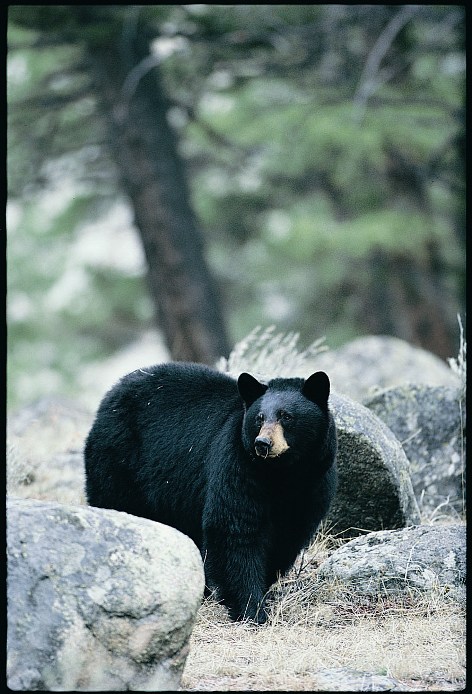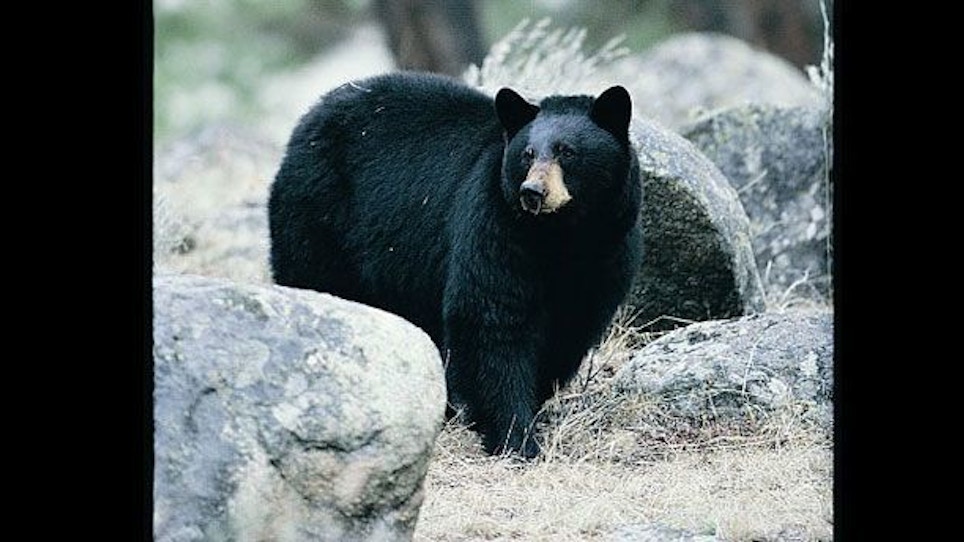Previously: Kootenai’s Black Bears, Grizzlies, And More; Spotting Emerging Bears
Judging Bear Size
 When you’re sitting up in a treestand over a donut-filled garbage can, judging a bear can be relatively easy: Young bears look a lot like a black Labrador retriever; bigger bears have a blockier head, boxy ears, and a short snout. They’re bigger around the middle—even in spring—which gives their legs a short, stumpy appearance.
When you’re sitting up in a treestand over a donut-filled garbage can, judging a bear can be relatively easy: Young bears look a lot like a black Labrador retriever; bigger bears have a blockier head, boxy ears, and a short snout. They’re bigger around the middle—even in spring—which gives their legs a short, stumpy appearance.
Without a spotting scope, judging bears from a mountainside away can be a challenge. Experienced hunters use the land as reference: the height of the grass; downed trees and stumps; the size of the saplings in the clearcut—all these things to gauge the animal’s size.
Tim had seen so many black bears over the years, he says that if you wonder about the size of a bear it’s probably too small. It’s kind of like telling the difference between a black bear and a grizzly—if you’re not sure, you’re definitely not looking at a griz.
Every day we were on the mountain, having left the truck gate well before dark just to be far enough back into the hills by first light. The bears could be caught feeding out in the clearcuts at any time of the day. In fact, our best sightings came in the middle of the afternoon.
By mid week and after some 30 miles walked, my soft, flatlander’s feet had blood blisters on them the size of half dollars. My head ached from hours hiking under the noonday sun, my eyes burned from glassing infinite miles of mountainside in that seemingly endless search for any black spot on the landscape that was not a charred stump but a bear.
Bare-chested, sweat-glistening, with pants rolled up to our knees, one afternoon Tim and I watched a small bear gorge himself for hours in a patch of clover. In his gluttony not once did he ever raise his head to sniff the wind or look around. Tim had him pegged as one just out of the den, a young boar that maybe went 200 pounds.
The feast came with random intervals of sleep—cat naps that lasted anywhere from 10 minutes to a half-hour—then the hunger pangs struck him and he was back in the clearcut again grazing like a sheep.
You have to wonder about a hunger like that, a hunger that’s been buffeted by months and months of winter, sleep, and cold. Though I try not to anthropomorphize, for the bear it must feel like being reborn.
This one, like four others we saw that week, were up in places we, frankly, couldn’t get to. I had a good chance on one, a beautiful brown-phase bear. But my stalk on him ended almost as quickly as it began when I ran out of cover and could then only watch as he fed down over the mountainside and out of my life forever.
I was feeling like the black cloud was back, hovering. But Tim, ever the optimist, said we still stood a good chance of spotting a bear on the long hike back to the truck. And it was in stopping to glass one last clearcut that I saw a grizzly.
See page 2 for more.
Grizz Sighting
 The grizzlies I’ve seen at parks and at zoos were like images on a television screen compared to this one. If I could, if I had the words within me, I would tell you how small I felt the moment when it stepped from the lodgepole and my crippled, clumsy mind realized what it was.
The grizzlies I’ve seen at parks and at zoos were like images on a television screen compared to this one. If I could, if I had the words within me, I would tell you how small I felt the moment when it stepped from the lodgepole and my crippled, clumsy mind realized what it was.
I just sat there staring at the bear for what was only a scant second or two. Then he pulled back into the shade of the trees as if stepping into the open, into the light, and exposing himself like that had frightened him somehow. I know he probably felt my glance. At any rate, I didn’t say anything at first because I half thought he might come out again. But my heart was beating so fast the words just came shooting out, “Jesus, Tim, I just saw a griz.”
We sat there for almost an hour glassing, panning back and forth along that edge, with me babbling on and on about the size of the bear, the color of his fur, the hump. Before long I half swore I had seen its eye.
Tim hadn’t seen it, yet even so I could tell he wanted to believe. He had lived in the valley for the last 10 years and had never seen a grizzly for himself. And knowing that I felt kind of silly, as if I just admitted seeing a Bigfoot or a UFO.
I wanted to hike over there, find its track—anything that might lend proof to what I saw—point to it, and scream at the top of my lungs, “There!” But it was almost dark and we were still a long way from the gate.
So I went again without killing a bear this spring; sometimes I think I never will. But next year I plan on doing it all again. Tim and I had the details all worked out before I stepped on the plane the next day.
Bowhunting is one of those things that you either understand or you don’t. If you’re not a bowhunter, the whole thing can seem like such an awful business. It’s anything but neat and pretty. Bowhunting is mud and dirt and stink and sweat. Calluses, blisters, and blood. It’s sneaking around. And, yes, sometimes it’s killing.
But through hunting I’ve been to places and traveled distances I might not otherwise have gone. And I’ve seen some things—I’ve seen the most wonderful things.






